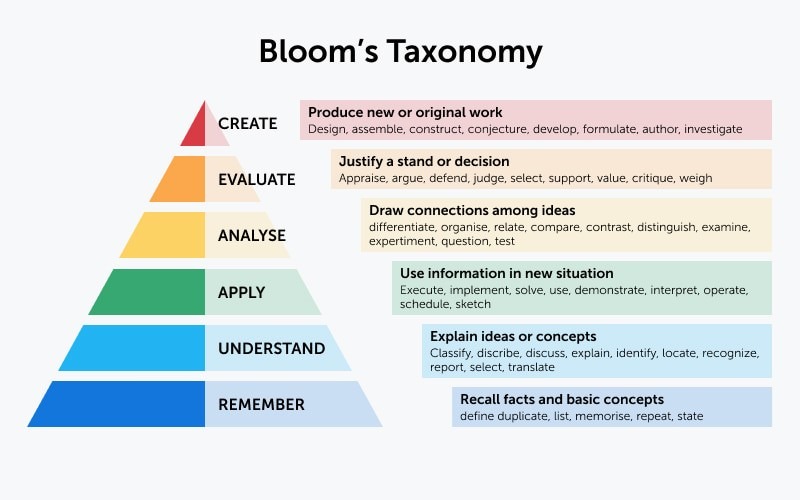Tenrycolle.com
What better to do than, share your English knowledge with other people
Tenrycolle.com
What better to do than, share your English knowledge with other people
What better to do than, share your English knowledge with other people
What better to do than, share your English knowledge with other people

The original taxonomy was first described in 1956 by Benjamin Bloom, an educational psychologist at the University of Chicago in the book Taxonomy of Educational Objectives with his coauthors Max Englehart, Edward Furst, Walter Hill, and David Krathwohl.
Bloom’s Taxonomy is a classification of the different outcomes and skills that educators set for their students (learning outcomes).
Since its publication, the book has been translated into over twenty languages and is currently utilized for instructional design all over the world.

A group of academics led by Bloom’s colleague, David Krathwohl, and one of Bloom’s students, Lorin Anderson, revised the taxonomy in 2001 to provide learners with clearer instructional goals.

Nouns are substituted by action verbs in the new variation. In addition, the taxonomy’s two highest levels are switched. The Illustration of the difference between the Original Bloom’s taxonomy and the Revised Bloom’s taxonomy could be seen below:

It refers to the ability to recall information, in other words, this stage of learning is about memorizing basic facts, dates, events, persons, places, concepts and patterns. Students, for example, can memorize and explain vocabulary words learned in class.
The associated cognitive processes are:
It manifests when students are able to explain ideas or concepts. For instance, they can clarify a metaphor or they can answer questions based on a text they have read.
The processes associated with understanding are:
The students can use facts or concepts in new or different contexts and particular situations. For example, the students can talk about a variety of situations using a grammar tense they have been taught.
The processes of cognition corresponding to this stage are:
The students are able to break down information into separate parts, then examine and create connections between these different parts. For instance, learners can compare and contrast the characteristics of two objects.
The three particular processes associated with this stage are:
It refers to the ability to form and express one’s opinion. The learners are expected to use their knowledge and skills to appraise a situation, justify their stand or criticize others’ opinions. One way students do this is by supporting and defending their views during a class discussion.
Evaluating is divided into checking and critiquing.
It is the most complex stage of the learning process and the highest level of the revised Bloom’s Taxonomy, wherein students can show proof of their learning by producing something new or original. Students at this stage, for instance, can rewrite a story in another setting or make a presentation out of the vocabulary, ideas, and concepts they’ve learned.
The three associated cognitive processes are:
When talking about Bloom’s taxonomy, action verbs associated with the categories and cognitive processes are often mentioned. Instructors use these verbs to describe activities required for achieving educational objectives corresponding to each level.
Table of Bloom’s taxonomy (remember) verbs

Table of Bloom’s taxonomy (understand) verbs

Table of Bloom’s taxonomy (apply) verbs

Table of Bloom’s taxonomy (analyze) verbs

Table of Bloom’s taxonomy (evaluate) verbs

Table of Bloom’s taxonomy (create) verbs
